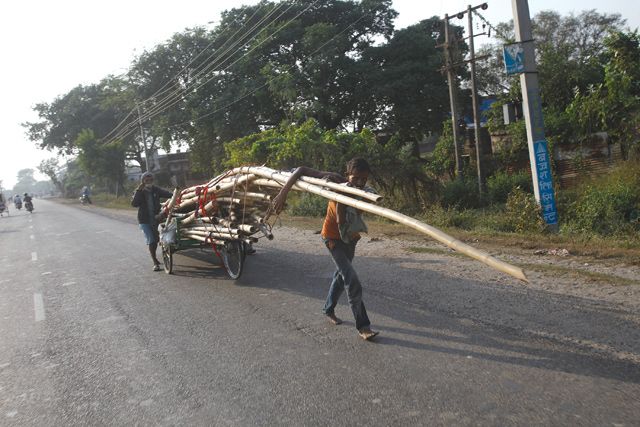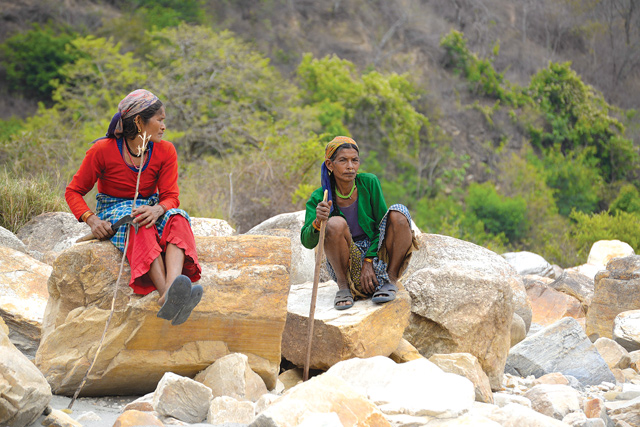Western mountain districts improve while east-central Tarai stagnates, as Nepal’s development remains uneven
The traditional narrative in Nepal’s development and political circles is that the eight districts of the east-central Tarai are the least developed parts of Nepal. They are often bunched together at the bottom of the pile with the under-developed districts of the western and far-western mountains.
Past UN Human Development Reports over the years show that compared to the national average, both the western mountain districts and east-central Tarai have lagged behind in the Human Development Index (HDI) — a composite statistic of life expectancy, education, and income per capita indicators.
More careful examination of the 2014 Human Development Report figures shows that the eight districts of the east-central Tarai (Siraha, Saptari, Dhanusa, Mahottari, Sarlahi, Rautahat, Bara and Parsa) performed better in terms of HDI than the hill and mountain districts of western Nepal (Achham, Dailekh, Bajura, Bajhang, Doti, Mugu, Humla).
Life expectancy and per capita incomes are actually higher in the east-central Tarai districts whereas the literacy rate and average years of schooling are better for the mountain districts of the west.
The far-western hill districts of the trans-Karnali have often been the first to suffer from food insecurity, due to the remote topography and out-migration of able-bodied men. This has affected agricultural productivity, leading to poor nutrition especially among women and children.
East-central Tarai districts are less vulnerable — despite an entrenched caste system and gender disparities, these districts are more accessible, and benefit from proximity to the open border with India.

However, while the western hills and mountains are now slowly climbing up in the development parameters, the index for east-central Tarai has remained stagnant over the years. Because of the higher population in the plains, government development outlay per capita is also much lower in the Tarai than in the hills.
“It is not fair to compare the two regions,†says Tula Narayan Sah of the Madhes Foundation. “They are different historically, geographically and population-wise. Although the districts in Far and Mid-West have lower HDI scores, they are making progress compared to the past whereas in the Madhes, the progress has been stagnant.â€
Indeed, Nepal’s Human Development Report published in 1998 shows that the districts in the mid- and far-west were the poorest in the country. The districts in Central Tarai were comparatively better: for example, Rautahat’s HDI score was 0.308 whereas Bajura’s was 0.173.
However, by 2004 the Human Development Report shows Bajura increasing to 0.310 and Rautahat to 0.409. And ten years later, Bajura was 0.364 and Rautahat had come down to 0.386. Other districts in the two regions follow a similar trajectory.
In the Human Development Report of 2014, the districts in the east-central Tarai lag behind the districts in mid- and far-western mountains in terms of education.

In his book, Some Aspects of Nepal’s Social Demography, Pitamber Sharma breaks down literacy data in the 1991, 2001 and 2011 censuses, by region, caste and district. In 1991 Rautahat was the only district from Madhes that had a low literacy rate, in 2001 Mahottari joined the ranks, and by 2011 six Madhes districts had the lowest literacy rates in Nepal.
The decline in education is not because of a lack of schools but due to educational policies, says Sah. He added:  “Many Madhesis faced difficulties when the one-language policy was introduced in the education sector, moreover there are fewer teachers for more students.â€
Government expenditure is higher in hills compared to other ecological belts and there is a wide variation in public expenditure in Nepal. “The per capita expenditure is more in the west and far-west than in the Tarai, even though the population in Tarai is greater than in the hills,†says Sah.
Uma Shankar Prasad in his study Government Expenditure in Madhes shows that in 2001/2 the Tarai got 19.4 per cent of the budget whereas the hills received 75 per cent, and the mountains 5.6 per cent. By 2009/10 the Tarai’s share had gone up slightly to 22.1 per cent, and the hills got 71.7 per cent. Because of the larger population involved, per capita government expenditure in the Tarai is even more disproportionate, and this is reflected in the lack of improvement in the HDI.
By Sahina Shrestha







